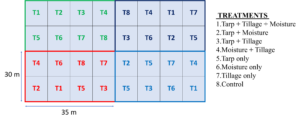Final report for GS21-251
Project Information
Agricultural weeds, or unwanted plants that compete with crops and limit crop yield, are a limiting factor for farmers, especially in the southern US where weed pressures are nearly year-round. This is particularly true for organic growers or any farmer who wants to reduce their dependency on herbicides or tillage to control their weeds, or to depend on expensive labor. These techniques are often economically prohibitive or associated with other negative impacts to human and environmental health. The use of tarps has re-emerged over the past few years as an effective and sustainable practice to limit weeds on farms, but relatively little research has been conducted on its efficacy and impact on the soil health, especially in southern subtropical environments. This exploratory on-farm research examines the effectiveness of tarping on weed pressure, particularly on bermudagrass. Using a complete randomized block design, we explore whether tarping, when used in combination with tillage and moisture, can have an in-season effect on bermudagrass encroachment and reestablishment, and examine treatment effects on soil temperature, soil moisture retention levels, and microbial community health. Tarping represents a unique opportunity to provide an effective weed management practice that is also cost effective, providing better economic opportunities to smaller growers residing in subtropical climates.
The project will consist of three primary objectives:
- Determine best practices of tarping as an effective weed management strategy. What combination of practices is best in suppressing weed growth, particularly that of bermudagrass? This work will be done across two seasons, and in combination with other techniques including tillage and strategic watering.
- Explore the impact of tarping and tillage treatments on soil health. Does tarping have a beneficial effect on the health of soil microbial communities and other soil health indicators?
- Examine if there is any tradeoff between weed management and soil health. Does tarping as a weed management strategy help improve yield? Field will be planted between experiments to explore any differences in gross yield.
Research
1. Using a complete randomized block design, a factorial field trial will be initiated at the UTRGV's Hub of Prosperity 5 acre farm to examine the effectiveness of three different factors on weed reemergence and establishment. The three factors include: (A) Tillage, (B) Tarping, and (C) Deep Watering. All combinations of these three factors will be tested, resulting in a 2 X 2 X 2 factorial experiment, i.e. 8 different treatments (See figure below), and repeated 4 times. Each treatment will be replicated in ~8m X 12 m plot, within a set of blocks included in a 60m X 70m field (1/10th acre) currently covered 100% in bermudagrass. For tillage, we will use a 725 BCS Tractor (walkbehind) with a tillage implement. All plots treated with tarps will be covered with dimension appropriate plastic tarps (Johnny's Selected Seeds, black). Tarps will be held in place with sandbags along the perimeters. All plots treated with water will receive a 10 minute hand watering before any tillage or tarping (where relevant).
Experiment will last for three months. Data on weed reemergence will be taken every two weeks after trial by observing a 3 m X 3 m block within each treatment plot) marked with flags). These observation plots will be positioned randomly near the center of each block to avoid edge effects. Overhead photos will be taken to estimate percent coverage over time.
2. At the beginning of each experiment, we will set up Teros 11 soil moisture meters (Meter Group, WA) in all + Tarp treatments and + Tillage treatments to examine effect on soil temperature and soil moisture. Sensors are connected to data loggers that collect this data every 30 mins. Data by treatment will be averaged and analyzed using an analysis of variance to examine the impact of tarping and tillage on soil temperature and moisture at two different depths (soil surface and at 10 cm deep).
Using a BACI (Before-After-Control-Impact), we can examine any treatment effect on soil microbial diversity by collecting soil samples at the beginning and end of the factorial experiment. A soil sample from each of the 32 treatment plots will include 5- 2" soil cores (10 cm deep) taken from the 3 X 3 plot at the center of each plot to make one composite sample for each repeated treatment (32 cores in the beginning and end). These soil cores will divided, processed/prepared in lab, and shipped to (a) the University of Missouri for PLFA (Phospholipid Fatty Acid) testing and (b) to USDA-Agricultural Research Service (Haney lab) in Temple TX for the Haney Soil Test used to determine what quantity of soil nutrients are available to soil microbes. This test also evaluates soil health indicators such as soil respiration (Solvita CO2 burst test) , water-soluble organic carbon and organic nitrogen and their ratio. Both tests will help reveal biological indicators of soil health (including fungi and bacteria). Researchers at U of MO at at USDA currently work with Dr. Racelis on another project focused on soil health, and will help with interpretation of results.
3. Immediately after the factorial experiments, we will set up drip irrigation within the entire 1/10th acre and plant seasonally appropriate crops. These crops will be grown with a fixed agronomic approach, including side dressing with organic fertilizer or using a fertigation system. We can examine any differences in health of plants & yield at the very end of the growing season. Seasonally appropriate crops for planting in winter (January) include potatoes, watermelon, cabbages, onions; while fall appropriate crops include: cucumber, kale, carrots.
All field work will be conducted on UTRGV's research farm, the Hub of Prosperity located in Edinburg TX, 1.5 miles from the main campus of UTRGV. Soils in the Hub of Prosperity farm are classified as Hidalgo sandy clay loam, one of the benchmark soils of the region. Prior to UTRGV's use of the property, the land had been abandoned (not farmed) for 5 years. Before that, there was annual history of planting in that space, most recently in sorghum, but also with other crops (such as beets). The farm remains largely covered in bermudagrass, although 2 acres are currently planted in vegetable crops and fruit trees .
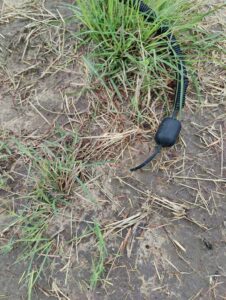
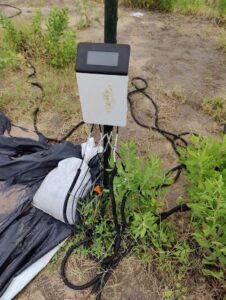
UPDATE: Trials were implemented in 2023, and methodology was followed through #2 listed here. No post treatment crops were planted (#3), as student did not successfully complete the study for a variety of reasons.
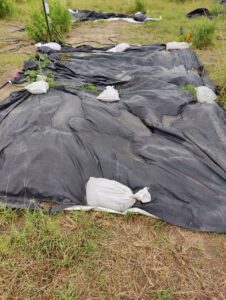
UPDATE: Trials were implemented in 2023, and methodology was followed through #2 listed here. No post treatment crops were planted (#3), as student did not successfully complete the study for a variety of reasons.
Educational & Outreach Activities
Participation Summary:
Spring 2023-Conducted prototype field day and talk for Agroecology students, a senior-level dual coded Biology and Environmental Science course with University of Texas Rio Grande Valley. Shared research methodology, justification, objectives, hypotheses, and demonstration of practice.
Project Outcomes
Although the study was not finalized, preliminary observations suggest that tarping is an effective method for weed management in small farms. This practice has been implemented in working conditions, such as at the Hub of Prosperity Farms in Edinburg TX.
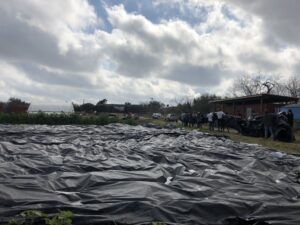
*Entered by advisor*: Student has unfortunately not completed the study due to personal reasons.
